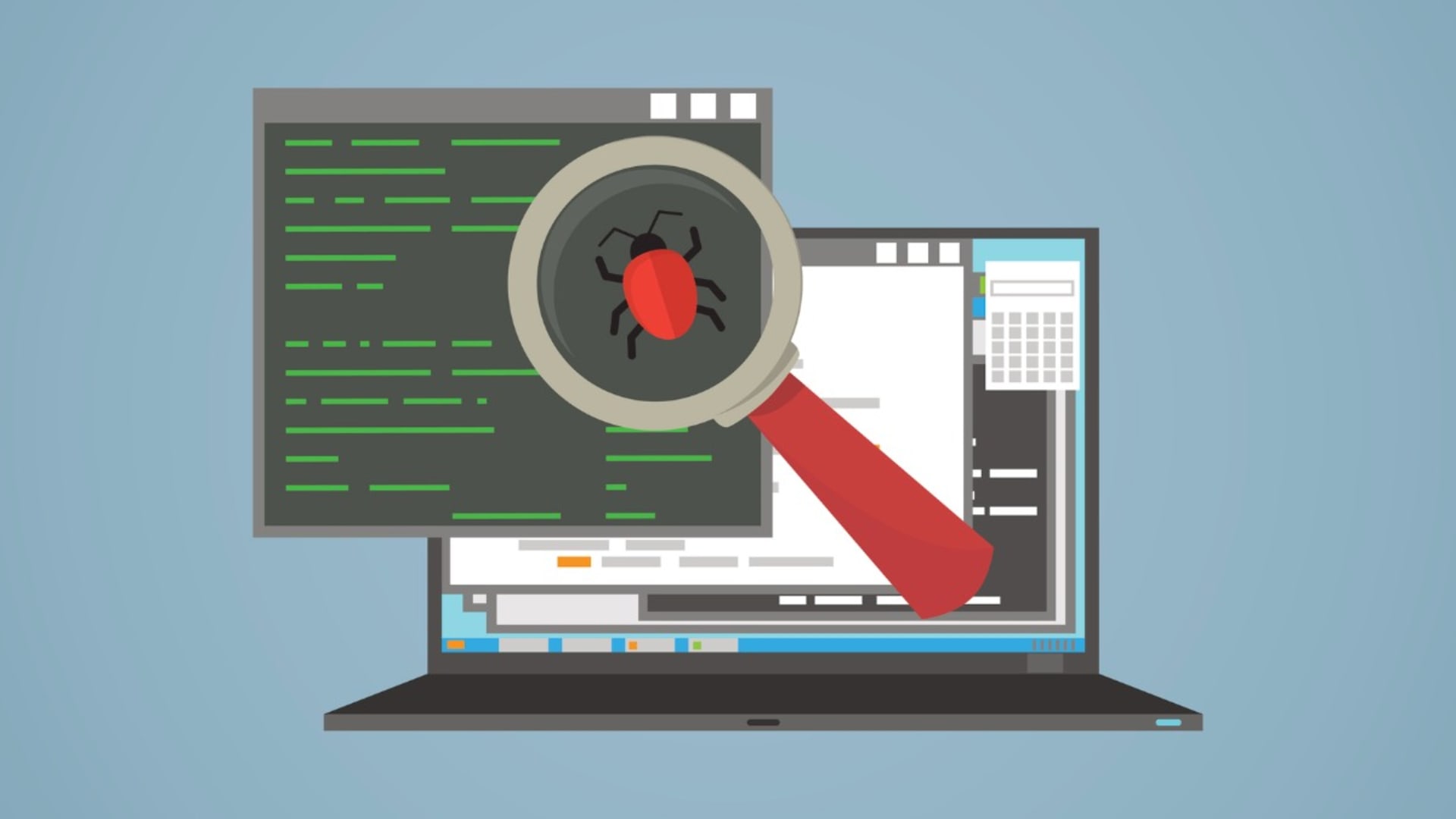DevOps merges software development (Dev) and operations (Ops) into a cohesive approach. It integrates development philosophies, tools, and practices, encouraging collaboration across teams.
The goal of a DevOps testing strategy is to increase a company or team’s ability to deliver apps and/or services rapidly. This methodology works at a much faster pace than traditional development processes. It also emphasizes communication, collaboration, automation, integration, and cooperation between software developers and IT professionals.
Traditionally, testing has been a separate phase that takes place after actual development work. In contrast, DevOps testing strategies integrate continuous testing into every step of the dev lifecycle. This enforces a culture of continuous improvement and quality through the use of automation practices for faster and more effective dev cycles.
Why DevOps for Testing?
Implementing DevOps in testing promotes a software development lifecycle that emphasizes collaboration and communication between development and operations teams. This enables faster release cycles and test automation and helps teams create higher quality products through continuous integration and delivery.
The Changing Landscape of Software Development
Traditional approaches to software development, like the Waterfall methodology, follow a sequential, linear process by dividing the lifecycle into distinct phases. While this provides a structured plan and approach for development projects, it also creates significant challenges by leaving software testing until the end of the process.
One of the most significant limitations of utilizing a linear development methodology is its inflexibility to change. Revisiting or altering work from the earlier stages of the process can be costly and time-consuming. Because software solutions often require bug fixes and other changes after the formal development phase, this isn’t efficient. Some of the consequences of this approach include delays and increased costs due to the late discovery of defects.
To avoid these issues, development teams often leverage Continuous Integration and Continuous Deployment practices (CI/CD) for test automation. This approach involves using automation to integrate code changes from multiple developers into a single project or repository. These integrations then facilitate the automatic deployment of all code changes to a continuous testing or production environment.
The Continuous Integration cycle encourages teams to make smaller, more frequent updates to reduce the number of integration problems and help facilitate faster release cycles. Regular integrations also assist devs in detecting and addressing defects earlier. This accelerates the feedback and bug discovery process while improving software quality.
Benefits of Integrating DevOps in Testing
Compared to more traditional linear methods and manual testing, a DevOps testing strategy gives teams advantages like faster development, better collaboration, and improved efficiency. The rapid nature of testing in DevOps gives teams immediate feedback. This allows them to address issues and defects more quickly. That facilitates an instant feedback loop, which helps teams meet tight project deadlines without compromising on quality.
Teams accelerate the release process by adopting DevOps and CI/CD practices. Companies gain increased agility and can respond to market and stakeholder demands without delaying the software release. The approach focuses on increasing collaboration between testers, operations teams, and developers, facilitating a more seamless process.
A growing number of teams are implementing DevOps in their work. The DevOps market crossed $8 billion USD in 2022 and is expected to continue growing at a rate of 20% CAGR from 2023 to 2032, according to a study by Global Market Insights.
Key Principles of DevOps Testing
DevOps focuses on the principles of continuous feedback and deployment. It also incorporates automation, collaboration, and communication in a shift-left approach.
Shift-Left Approach
The “shifting left” concept refers to moving or stretching the testing phase of a development lifecycle to the left of the linear project timeline. This helps make the prevention of issues the priority. In DevOps, Shift-Left involves integrating quality assurance and continuous testing processes much earlier in the development cycle instead of leaving it as a separate phase at the end.
Early bug detection is a significant benefit of the Shift-Left approach because it allows teams to identify and rectify issues early to avoid complex and expensive resolutions further down the line. Developers receive immediate, continuous feedback on their code and can make any necessary fixes in real time. This proactivity in defect resolution saves teams both time and costs while helping to improve code quality.
Automation in DevOps Testing
Automation is a vital tool for modern software development and deployment, especially in DevOps testing. Automated tests significantly reduce the amount of manual effort required to manage and deploy software. This accelerates the delivery pipeline while improving a development team’s ability to adapt to feedback and relevant market changes. By ensuring that every piece of code goes through automated tests, developers and testers catch bugs much earlier on in the process and resolve them efficiently. .
In DevOps environments and beyond, teams use a variety of technologies and tools to facilitate test automation. This includes tools like Selenium for automating testing web apps and browser actions, Docker for creating segregated, controlled app testing environments, and Jenkins for automating the integration and delivery pipeline.
Kubernetes facilitates containerization within applications to help with more granular test automation, while GitLab CI helps with continuous pipelines. Each tool makes the continuous testing and continuous integration processes run automatically to create higher-quality products with faster releases.
Infrastructure as Code (IaC)
Infrastructure as Code (IaC) treats networks, load balancers, virtual machines, networks, and other infrastructure as software. As a key aspect of test automation, this approach allows teams to provision and manage infrastructure via code to avoid manual processes and human error. By using code to automate hardware setups and configurations, it enables faster, more secure, and consistent software deployment. IaC also makes it easy to create and tear down test environments and configurations with minimal manual interventions.
Tools like Puppet, Terraform, Chef, and Ansible ensure consistent, reliable infrastructure deployments across all environments through automated provisioning. Along with IaC practices, these tools give teams the ability to better handle version control configurations, change tracking, and rollbacks to improve the security and stability of the app delivery process.
Continuous Feedback
Continuous feedback is the foundation for the iterative improvement of processes and products in DevOps testing. By facilitating the continuous exchange of information among stakeholders, continuous feedback aligns the development process with quality standards and user needs. In DevOps environments, continuous feedback loops facilitate rapid bug and issue identification to allow teams to both address problems in real time and adapt strategies more efficiently.
Automated testing tools and methods help with gathering and analyzing feedback to maintain the flow of information. For example, UserVoice and Qualtrics collect information from end-users directly via inputs to generate insights into user satisfaction and areas requiring improvements. Monitoring tools, such as Grafana and Prometheus, aid teams in identifying and correcting issues with real-time data on app performance.
Splunk and ELK Stack are log management tools. They also offer insights into system behavior and potential anomalies. Integrating continuous DevOps automated testing tools like Selenium within CI/CD pipelines enables teams to access immediate feedback on recent changes. Collaboration and project management software, such as Slack and Jira, helps team members deliver feedback more efficiently, too.
Challenges in Implementing DevOps for Testing
Although it’s a useful approach, teams sometimes encounter issues and challenges when implementing DevOps as part of their testing procedures.
Cultural Shifts
Implementing DevOps procedures for testing requires a significant cultural shift for teams and companies to support continuous processes and overall operational efficiency. DevOps involves more than just adopting and adapting new technologies. It requires a comprehensive approach that includes shared responsibilities, collaboration, and open communication among all teams involved. This major shift helps make automated testing a continuous part of development instead of a separate phase that falls under the purview of one team.
However, this transition can create friction among team members. In most traditional development methods, teams work in silos and operate independently. The blurring of team roles due to the increased interdependency created by DevOps may cause some apprehension. Overcoming this resistance starts with leadership’s commitment to creating a work culture of open communication, adaptability, and continuous learning. Companies should also guide teams through the transition process to ease any tension or butting of heads to help facilitate a smoother transition.
Skill Gaps
Incorporating DevOps into an existing testing team may expose skill shortages that can hinder its successful implementation. Test automation, CI/CD practices, collaboration skills, and cloud technologies are just a few common problem areas. With the rapid, automated cycles involved in the DevOps approach, all developers and testers must be proficient in using automation tools and scripting languages. Knowledge of Continuous Integration and Continuous Delivery pipelines is also crucial.
Organizations should invest in target training programs and initiatives for professional skills development within the workplace. By offering workshops and certifications on specific practices and DevOps testing tools, companies empower their teams with critical technical skills while encouraging participation. Supporting a culture that encourages employee continuous learning and evolution within the workplace helps teams avoid skills gaps.
Tools and Infrastructure
DevOps testing can create unique challenges for companies due to the vast array of rapidly evolving technologies and tools involved. Organizations must figure out how to balance reliability and team expertise with the need for cutting-edge solutions, scalability, compatibility, and cost-effectiveness.
Choosing the right tools and tech stack for DevOps testing requires careful evaluation. Teams must weigh each option’s features, community support, and compatibility against the specific needs, demands, and operational workflows of the company. The best continuous testing tools enhance efficiency and collaboration across teams while facilitating a successful testing strategy. Testing tools that offer flexibility and adaptability for future tech advancements also help future-proof development and operations teams.
Test Environment Management in DevOps
In the context of DevOps, Test Environment Management (TEM) demands a strategic approach to maintain efficiency and reliability. This can also present some challenges. Aligning the consistency of dynamic testing environments with production is one of the most common obstacles to implementing DevOps. Inconsistency between environments can lead to situations of “it works on my machine” syndrome, a fallacy in which software functions perfectly in a developer’s local environment but malfunctions in testing and production.
IaC practices help teams efficiently manage test environments. They enable automatic setup and removal of environments, ensuring consistent configurations each time. Containerization technologies and tools, such as Kubernetes and Docker, also help developers create reproducible and isolated environments that mirror production.
By integrating environment management tools within the CI/CD pipeline, teams automate their deployment and testing processes to further enable fast adjustments based on feedback. Keeping all testing and dev environments updated and aligned with production is the best way for teams to handle post-launch bugs and avoid future problems.
Role of Test Data Management (TDM) in DevOps
Effective test data management is crucial for mimicking real-world scenarios, accelerating dev cycles, and producing the most accurate testing outcomes. In DevOps testing, TDM plays a major role in the success of the cycle by guaranteeing that teams have access to relevant and high-quality test cases on demand.
TDM involves automating the creation and management of test cases to keep up with continuous testing needs. By utilizing tools to generate realistic but anonymized data, TDM helps protect sensitive data while enabling comprehensive and relevant tests. Version control for this data further enhances the process by making test cases traceable and repeatable.
Integrating TDM strategies within the continuous pipeline helps reduce bottlenecks and improve testing efficiency by offering seamless test data access and management. To keep testing data secure, teams must adhere to any relevant compliance regulations, enforce data breach safeguards, and securely store and manage data.
Security Testing within DevOps (DevSecOps)
DevSecOps involves integrating security testing into the DevOps pipeline to ensure the secure delivery of applications. The goal of this integration is to embed security practices at every stage of the development lifecycle, as DevOps does with testing, to make security considerations a continuous and integral process. In DevSecOps, teams gain the ability to identify and address vulnerabilities early on in the process to reduce security risks and ensure regulatory standard compliance.
Organizations have many options when it comes to tools and practices for facilitating continuous security testing. Dynamic application security testing (DAST) and static application security testing (SAST) automatically scan for vulnerabilities during code writing and testing in continuous pipelines. Tools for scanning containers and IaC help teams further by assessing configurations and dependencies for potential security threats.
Best practices for DevSecOps start with regular security training for developers to create a security-first culture. Threat modeling sessions also help teach teams how to anticipate and mitigate attacks. DevSecOps teams should utilize automated tools to guarantee continuous security assessment.
Best Practices for Integrating DevOps in Testing
Regular, open communication is the foundation of effective DevOps testing. By constantly collaborating, continually monitoring and reporting, and using containers and microservices, teams set themselves up for success with this approach.
Collaboration is Key
Collaboration between developers, testers, operations teams, and all other parties is a fundamental part of achieving success with the DevOps model of testing. To support a collaborative environment, company and team leaders should encourage cross-functional teamwork by implementing shared metrics and goals.
Regular stand-ups, planning sessions, and post-project regroups help bridge the gaps between departments. Adopting collaboration tools, like communication apps and shared repositories, further these efforts and keep everyone on the same page. Facilitating a work environment based on mutual respect and learning helps make team members feel comfortable enough to share constructive criticism and knowledge to work together more effectively.
Use of Containers and Microservices
Using microservices and containers together in a DevOps pipeline enhances the reliability and efficiency of the process by creating smaller, more consistent testing environments. By encapsulating apps and their dependencies into a portable, individual unit, containers better enable a consistent experience across any infrastructure. This facilitates smoother development, testing, and deployment.
Microservices architectures complement containerization by sectioning apps into smaller and manageable app divisions for independent development, deployment, and scaling. In testing, this architecture allows testers to isolate and test individual sections without deploying the entire app to identify and resolve issues faster.
Regular Monitoring and Reporting
By constantly monitoring tests and results, testers detect and address issues more quickly, ensuring continuous improvement and app health. Tools with real-time monitoring capabilities, like Prometheus and Grafana, offer insights into application performance levels and test outcomes. With automated alerts and dashboards for easy access, these reporting tools keep all stakeholders informed to facilitate transparency and accountability across the company.
Conclusion
Using DevOps practices for testing mean implementing continuous testing in every step of the development process. In addition to automation and CI/CD practices, this approach encourages leaders to cultivate a work culture based on collaboration and communication. This leads to more successful project outcomes. By addressing challenges in the process with TEM, TDM, and DevSecOps, teams bolster their testing ecosystems even further.
Applying DevOps to a testing environment significantly improves team agility, reliability, and speed. This approach enables companies to stay competitive in the modern software landscape by ensuring quality improvements and quicker development cycles.
FAQ
What is the main advantage of integrating DevOps in testing?
There are three main advantages to integrating DevOps in testing: faster releases; more efficient feedback loops between stakeholders, end users, and development teams; and higher-quality software solutions.
How does automation play a role in DevOps testing?
DevOps test automation helps teams achieve a smooth and reliable Continuous Integration and Deployment pipeline. This reduces instances of human error while making testing and bug resolution a part of every step of the lifecycle.
What is the Shift-Left approach in DevOps testing?
The Shift-Left approach in DevOps testing involves integrating testing at the very start of the development process by “shifting” the phase from the end of the timeline to the left (beginning).
Can traditional testers adapt to the DevOps framework?
While there is a learning curve associated with transitioning to DevOps, can usually adapt well to the framework. The transition requires learning about CI/CD pipelines, automation, test environment management, and how to utilize DevOps tools..
What are some different types of software testing in a DevOps environment?
In a DevOps environment, there are various types of software testing applied to ensure quality during the software development process. They are integrated into the CI/CD pipeline to promote early problem detection and collaborative problem-solving. Some common types of testing are functional testing, performance testing, load testing, unit testing, integration testing, acceptance testing, and system testing.









